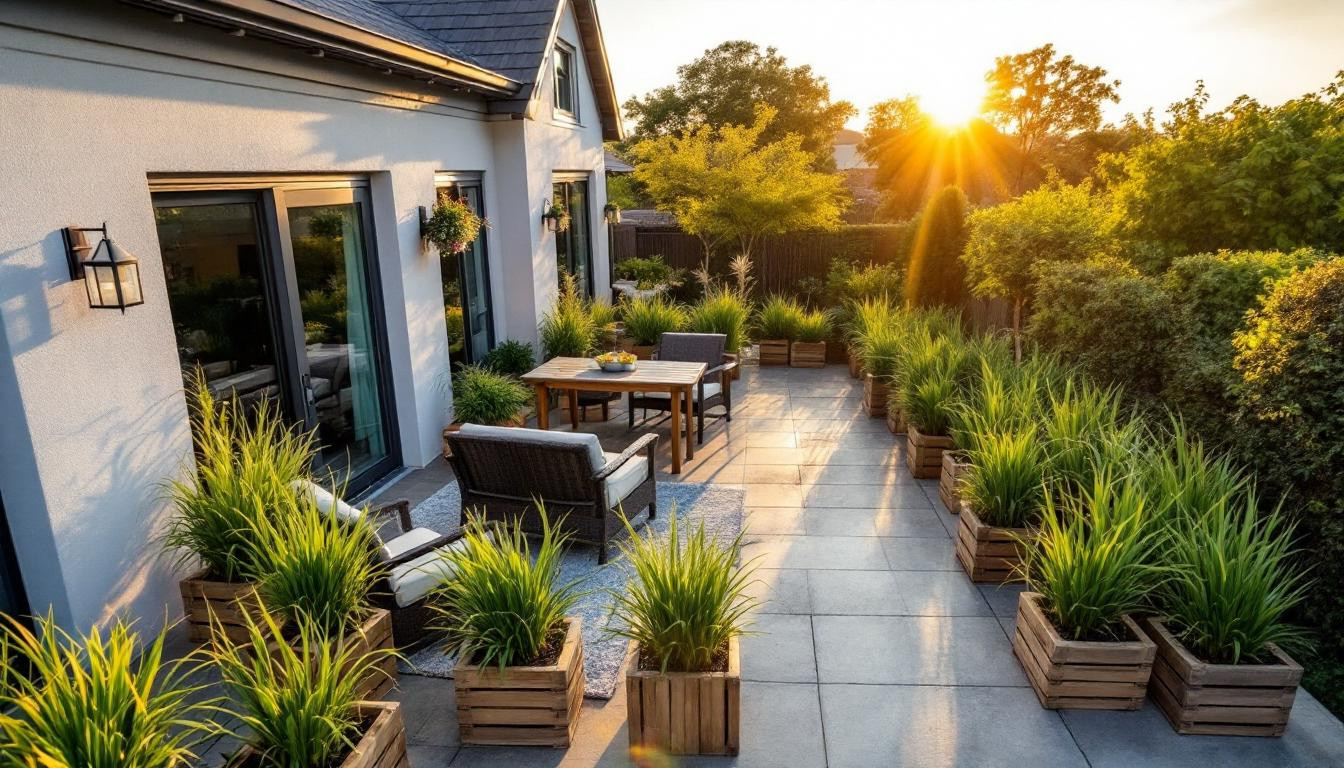Lemongrass has emerged as a game-changing natural solution for creating mosquito-free zones in outdoor spaces. Growing this versatile plant in crates not only provides an eco-friendly pest control method but also adds a touch of elegant design to your patio or garden. Let’s explore how this simple yet effective strategy can transform your outdoor experience while keeping those pesky mosquitoes at bay.
Why lemongrass is nature’s mosquito shield
Lemongrass contains citronella oil, a compound that effectively masks the scents that attract mosquitoes to humans. “The citronella in lemongrass confuses mosquitoes’ sensory receptors, making it difficult for them to locate their human targets,” explains Dr. Emily Chen, botanical entomologist at the Urban Gardening Institute. Unlike chemical repellents that can harm beneficial insects, lemongrass offers a selective deterrent primarily affecting mosquitoes.
The perfect crate setup for maximum effectiveness
Creating an effective mosquito barrier starts with proper container selection. Wooden crates not only provide excellent drainage but also complement various outdoor design styles. For optimal results, choose crates at least 12 inches deep to accommodate lemongrass’s robust root system. Position multiple crates strategically around seating areas to create a protective perimeter that mosquitoes are reluctant to cross.
Design benefits beyond pest control
Beyond its practical applications, crate-grown lemongrass adds significant aesthetic value to outdoor spaces. Its architectural form creates visual interest with tall, arching foliage that sways gracefully in the breeze. “Lemongrass serves as a living sculpture in the garden,” notes landscape designer Thomas Rodriguez. “The plants create a fountain-like effect that softens hardscapes while providing vertical interest in container arrangements.”
“I’ve incorporated lemongrass crates into dozens of outdoor living designs, and clients consistently report both fewer mosquitoes and more enjoyment of their spaces. It’s like creating an invisible protective bubble around gathering areas.”
Planting tips for thriving lemongrass
To ensure your lemongrass thrives and maximizes its mosquito-repelling potential, follow these essential guidelines:
- Use well-draining potting soil mixed with compost
- Position crates in locations receiving 6+ hours of direct sunlight
- Water deeply when the top inch of soil feels dry
- Fertilize monthly during growing season with balanced organic fertilizer
Amplifying the repellent effect
While growing lemongrass creates a baseline deterrent, you can enhance its effectiveness through regular interaction. Brushing against or lightly crushing leaves releases more essential oils, creating a stronger mosquito barrier. For maximum protection, combine crate-grown lemongrass with other natural mosquito repellents like citronella candles during outdoor gatherings.
Sustainable pest management solution
Unlike chemical pesticides that require frequent reapplication and raise environmental concerns, lemongrass represents a sustainable approach to pest control. “Lemongrass exemplifies how we can work with nature rather than against it,” explains Dr. James Wilson, environmental toxicologist. “It’s like having a continuous, non-toxic mosquito repellent factory operating 24/7 in your garden.” This aligns with modern sustainable pest control methods that prioritize ecosystem health.
Creative arrangement ideas
For maximum impact, consider these creative gardening solutions with lemongrass crates:
- Create a living privacy screen by staggering crates of varying heights
- Establish a border around dining areas or fire pits
- Flank entryways to intercept mosquitoes before they enter your home
Bonus benefits: from garden to kitchen
Lemongrass isn’t just a pest deterrent—it’s also a valuable culinary herb. The stalks add distinctive citrus flavor to Asian dishes, teas, and marinades. Additionally, lemongrass essential oil is renowned for its essential oil benefits for skin, making it a true multi-purpose plant.
Is lemongrass right for your outdoor space?
Lemongrass thrives in warm environments (USDA zones 8-11) but can be grown as an annual in cooler regions. In colder climates, simply bring crates indoors during winter months. This adaptability makes lemongrass an excellent choice for nearly any outdoor space. Combined with other DIY home remedies for pest control, it creates a comprehensive solution for mosquito management.
Are you ready to transform your outdoor space into a mosquito-free sanctuary? With a few strategically placed lemongrass crates, you can create an environment that’s both beautiful and functional—a verdant shield that allows you to enjoy the outdoors without the constant swatting and itching that mosquitoes bring.
